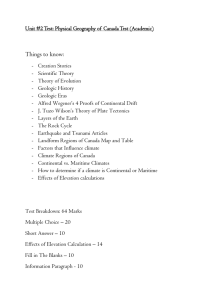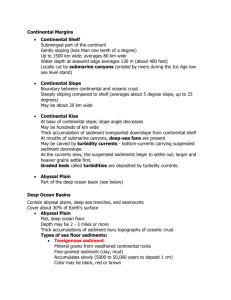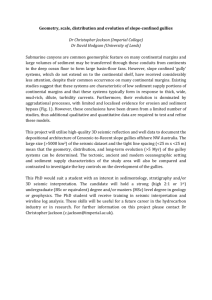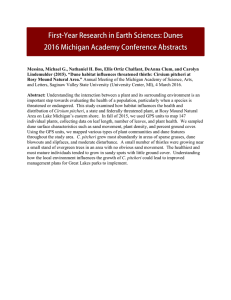Lecture 11: Sedimentary Environments
advertisement
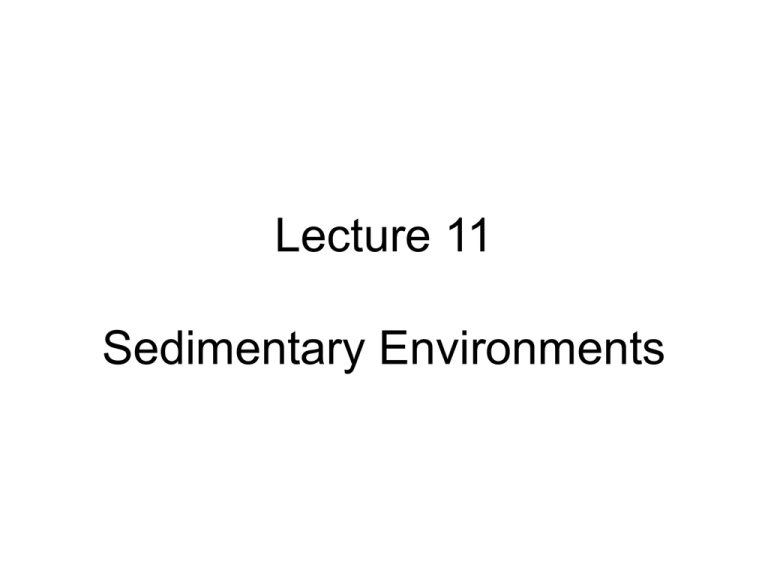
Lecture 11 Sedimentary Environments Goals 1. understand the relationship between sediments, the structures that the contain and the environment in which they were deposited 2. Recognize the environment from rock outcops 3. Use knowledge of environment to constrain tectonic history Depositional Environments Load Stream environments Hjulstrom curve Alluvial fan Alluvial fan deposits Meandering River Meandering river deposits Flood plain Flood plain deposits Deltas Growth of Deltas distributary levy bay distributary mouth bar Mississippi Delta Shoreline Environment Sediment transport by wave action Wave Action Longshore current Example of migraton Barrier Island QuickTime™ and a TIFF (LZW) decompressor are needed to see this picture. Bay Barrier Island Continental Shelf Why so flat? Continental Slope Environment Sediment transport by mass wasting “turbidity currents” Continental slope Continental rise Most of the sea floor…boring! Turbidity Currents Grand Banks Turbidite Turbidites transport sediment to great distances offshore Turbidites in core Bouma Sequence Ancient Turbidites Wind-blown environment Dominated by sand dunes dune Dune transport Navajo Sandstone – dune deposit Dune sediments foam Coarse grained environments Fine grained environments Biogenic reefs Bahamas Buried reef on continental margin Bioclastic Limestone Fine-Grained Limestone Deep sea limestones will not have visible fossils, because they are made up of the shells of little dead bugs like these: foraminifera. This specimen (viewed by scanning electron microscope) is about 100 microns long (0.1 millimeter). Coccoliths – another type of organisms with a CaCO3 test Dover Deep water marine environment Evaporites Calcite, halite and gypsum are common precipitates from dried lakes in arid environments. the white is halite, the red are bacteria that love salt Owens Valley, CA Evaporites in Death Valley Martin G. Miller Evaporites formed during rifting Restricted basin: more evaporation than inflow Limited sea water evaporation Very salty water Deposition of evaporites Limited river water No hole no deposition Processes that create holes rifting faulting thermal subsidence glacial ocean growth Etc.


